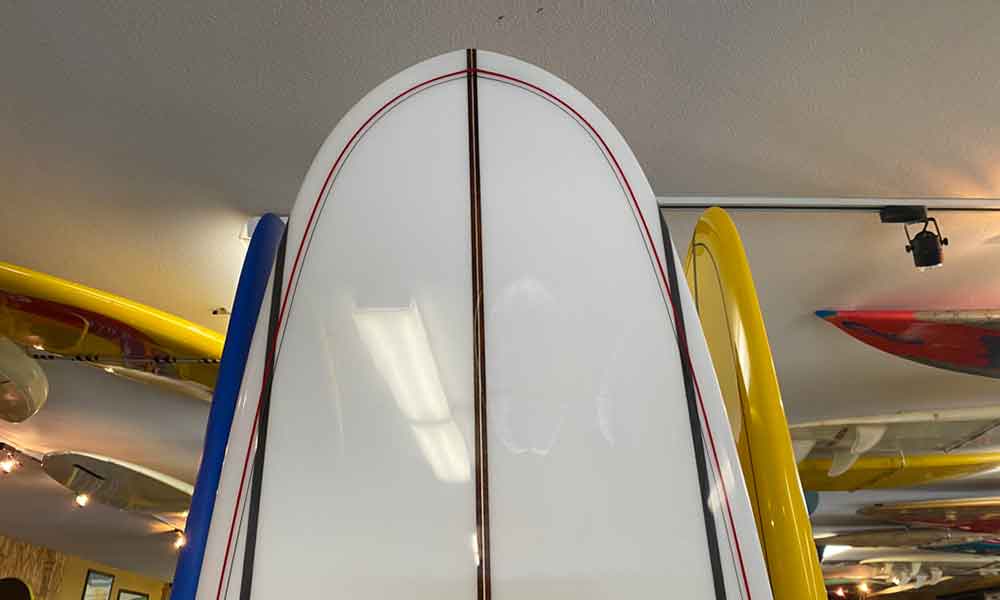The tip of a surfboard is called the nose. It refers to the top 12” of the surfboard. The shape, thickness, rocker and concave of a surfboard nose will help determine how easy a surfboard will be to paddle, catch waves, and turn.
Each type of surfboard nose provide its own functionality and benefits when paddling, catching waves, duck diving, and dropping into the wave.
There are 4 main types of surfboard noses: The round nose, rounded-pointed nose, pointed nose and the square nose.
Round Nose Surfboard
A rounded nose on a surfboard is commonly found on longboards, fun shape surfboards and foamie surfboards. A round nose gives a surfboard glide and lift when a surfer paddles and when they ride a wave.
Rounded noses are essential to longboards that are designed to be noseriders because the extra foam in the nose gives room for and allows surfers to run up to the front of the longboard and stand on the nose to hang ten or five.
The con of surfboards with rounded noses is that they can be difficult to duck dive because of the added volume in the nose of the surfboard.
Surfboards with rounded noses are helpful to beginner surfers because the extra foam in the nose gives more stability.
Rounded-Pointed Nose Surfboard
Rounded-pointed noses are found on longboards, funboards and smaller surfboards including grovelers and hybrid surfboards and some fish shapes.
The rounded-pointed nose has similar benefits of the rounded nose, namely stability and wave catching ability, but the reduction in volume makes surfboards with rounded-pointed noses easier to duck dive.
Pointed Nose Surfboard
Pointed noses are found on shortboards and big-wave surfboards and have much less volume of foam vs a rounded or rounded-pointed surfboard nose.
Surfboards with pointed noses are shaped with performance in mind. The slenderer nose allows a surfboard to cut through the water faster than a bigger surfboard nose does. Pointed surfboard noses are easy to duck dive but require more effort to catch waves than other surfboard nose shapes.
Square Nose Surfboard
Square nose surfboards are the least common of all the surfboard nose shapes and sit at the experimental end of the surfboard spectrum. The lack of volume and abrupt end of the surfboard allow the surfer to get into tight spots of the wave. You typically see square nose surfboards on smaller surfboards.
Surfboard Nose FAQs
How does nose shape affect a surfboard?
The nose shape affects how a surfer may turn a surfboard and how easily a surfer can catch waves. The more volume in the nose of a surfboard, the easier it is to catch waves. Less volume in the nose of a surfboard helps a surfer turn the surfboard more easily.
Why do some surfboards have round noses?
The reason some surfboards have round noses is because certain styles and shapes of surfboards are designed to perform in very specific ways. A surfboard with a round nose is designed to catch waves easily and if it is a longboard, it may be better suited to noseriding.
Pointed nose vs round nose – What the difference?
Pointed nose surfboards are found on smaller surfboards know as shortboards. Shortboards are designed for performance. Round nose surfboards are designed to catch waves more easily and can be ridden in somewhat smaller surf more easily due to the volume of foam they contain.







